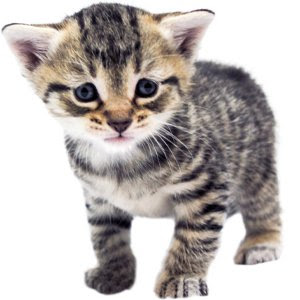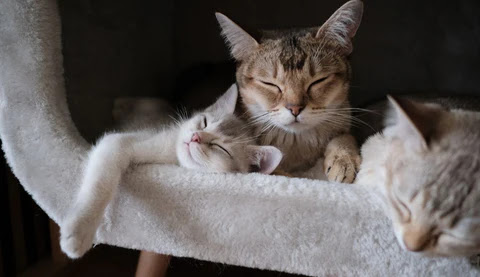how old is my cat in human years? A comprehensive guide
Age conversion chart
As cat owners, we always want to ensure that our beloved pets live long and healthy lives. One question that often comes to mind is, “How old is my cat in human years?” Understanding the age equivalence between cats and humans can help us better gauge their overall health and well-being. In this article, we will explore the topic of cat age conversion and provide you with a handy age conversion chart to better understand your cat’s age.
Calculate cat’s age
Before we delve into the details of cat age conversion, let’s understand the basics. The average lifespan of a cat can vary depending on several factors such as breed, genetics, and overall care. Generally, cats live between 12 to 16 years, but some cats have been known to live well into their twenties!
Unlike humans, cats age at a different rate, particularly during the first few years of their lives. As kittens, they experience rapid growth and development, which gradually slows down as they mature into adults. To calculate your cat’s age in human years, it’s essential to consider these differences in the aging process.
Cat age calculator
Understanding the exact age equivalence of your cat can be a bit complex, but fret not! We have a cat age calculator that can simplify the process for you. Simply input your cat’s age in years or months, and let the calculator do the rest. It will provide you with a rough estimate of your cat’s age in human years.
Please note that the cat age calculator is not an exact science but can give you a general idea of your cat’s age. It can be a useful tool in monitoring your cat’s development and discussing their overall health with your veterinarian.
Aging in cats
Cats go through different life stages, each with its unique characteristics and healthcare needs. Understanding the aging process in cats can help you provide appropriate care for your feline companion.
Kittenhood (0-6 months): During this phase, kittens experience rapid growth and development. They require a nutritious diet, regular veterinary check-ups, vaccinations, and lots of playtime to stimulate their physical and mental growth.
Junior (7 months – 2 years): This stage can be likened to the teenage years in humans. Cats are full of energy and curiosity but are still growing into their adult bodies. Playtime remains crucial, and a balanced diet is vital to support their growth.
Prime (3-6 years): Cats in their prime are generally healthy and active. They have reached their full adult size and require consistent exercise, a well-balanced diet, and routine veterinary care.
Mature (7-10 years): As cats enter their mature years, they may start to experience some age-related changes. It’s essential to monitor their weight, diet, and dental health more closely during this phase. Regular veterinary check-ups become even more important to catch any potential health issues early.
Senior (11-14 years): Senior cats require extra care and attention. They may start to experience age-related conditions such as arthritis or kidney disease. Adjustments to their diet and exercise routine might be necessary, along with frequent veterinary visits to manage their health effectively.
Geriatric (15+ years): Cats in their geriatric stage need specialized care and a close partnership with your veterinarian. Regular health check-ups, blood tests, and modifications to their environment can help keep them comfortable and happy during their golden years.
Cat human age
Cat human age conversion is a rough approximation of a cat’s age compared to that of a human. It’s important to note that this conversion is not an exact science, as cats age at different rates depending on various factors such as breed and overall health.
According to popular belief, the general consensus was to multiply a cat’s age by seven to obtain their age in human years. However, recent research has shown this method to be inaccurate. Cats actually age much more rapidly during their first year of life compared to humans. During their second year, they age at a slower rate, and thereafter, each additional cat year is roughly equivalent to 4 human years.
For instance, a 1-year-old cat is approximately equivalent to a 15-year-old human, while a 9-year-old cat is approximately 52 in human years. Remember, this calculation may not be precise, but it gives you a rough idea of your cat’s age in human terms.
Cat years to human years
To help you better understand your cat’s age in human years, we have put together an age conversion chart. Please refer to the chart below:
Cat Age (in years)Human Age (in years)1152243284325366407448489521056 Please note that this chart is a general guideline and may not be accurate for all cats. Different cat breeds and individual health conditions can influence the aging process. Regular veterinary check-ups and discussions with your veterinarian can provide a more accurate assessment of your cat’s age and overall health.
How old is my cat in human years calculator
If you want a quick way to determine your cat’s age in human years, you can use our cat age calculator. Simply input your cat’s age, and the calculator will provide you with an estimate.
It’s important to remember that the calculator provides an approximation and should not be considered a substitute for professional veterinary advice. If you have any concerns about your cat’s age or health, it’s best to consult with your veterinarian.
Conclusion
Understanding your cat’s age in human years can give you valuable insights into their overall health and well-being. While the conversion may not be exact, it provides a rough estimate that can be informative for cat owners. Remember to consider factors like breed, genetics, and individual health when evaluating your cat’s age. Regular veterinary check-ups and open communication with your veterinarian are essential in providing the best possible care for your feline friend.
So next time you’re cuddling with your cat, take a moment to appreciate their unique age and cherish the moments you have together.













